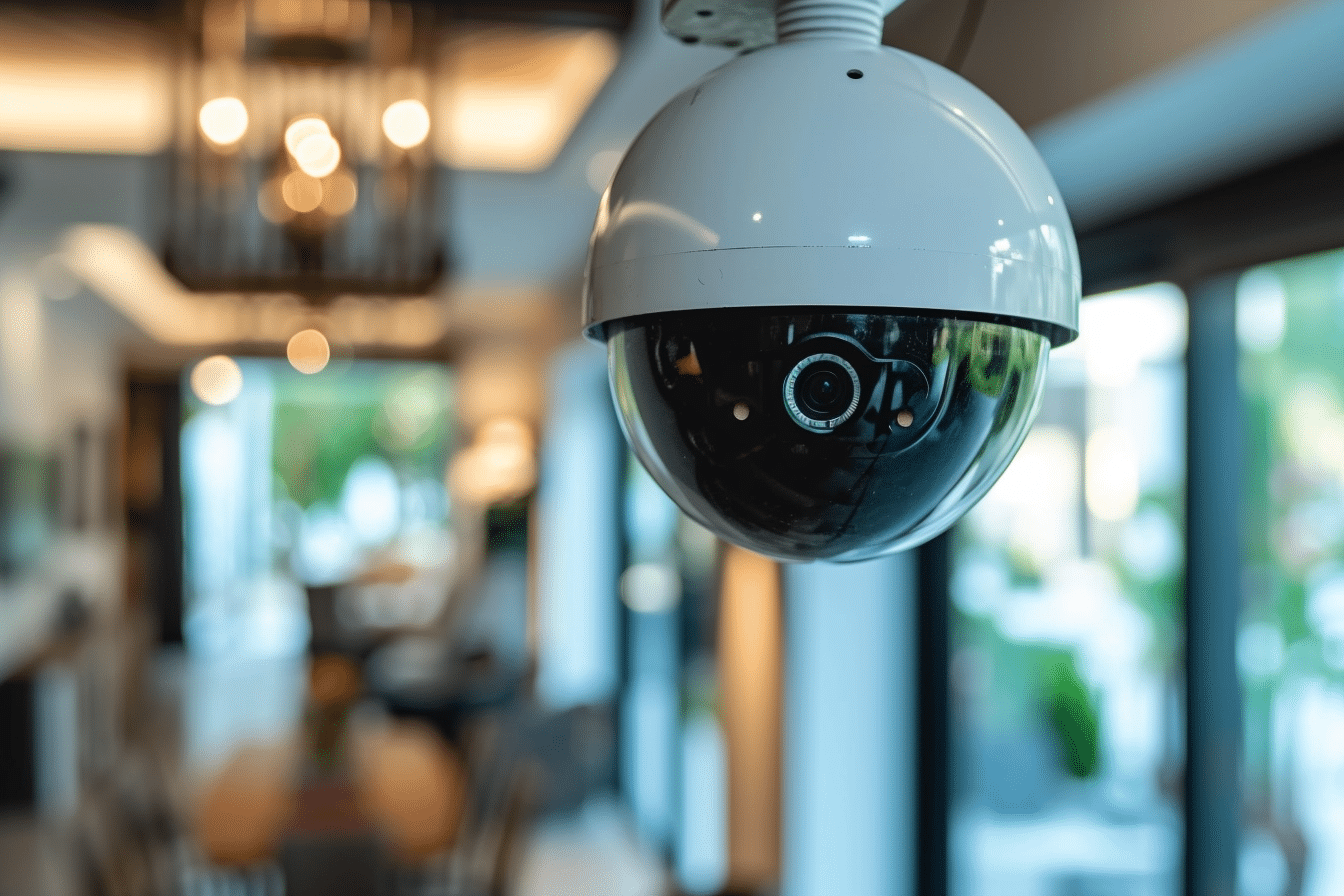
Smart Home Security Systems: Easy Steps for a Safer Living
In today’s fast-paced world, ensuring the safety of one’s family and the protection of personal property has become more crucial than ever. Fortunately, advances in technology have given rise to smart home security systems, a robust solution that safeguards homes and offers peace of mind. These intelligent security systems not only keep intruders at bay but also provide an array of additional features that include home automation and remote monitoring.
As the concept of a connected home continues to evolve, homeowners now have the flexibility to choose from various smart home security products that cater to their specific needs. These advanced systems not only offer protection but also help save energy, deliver convenience, and enhance one’s lifestyle. For those seeking to invest in a smart home security system, they’ll discover an extensive range of options with various features, integration capabilities, and pricing plans.
However, choosing the right security solution can be overwhelming for many. Therefore, it’s essential to understand the key components and features of different systems, compare popular brands and products, and weigh the pros and cons of DIY versus professionally installed systems, among other crucial factors.
Key Takeaways from Smart Home Security Systems
- Smart home security systems provide enhanced safety and offer additional features, such as home automation and remote monitoring.
- A variety of options are available, with different components, features, and pricing plans to cater to homeowners’ specific needs and preferences.
- When considering a system, it’s crucial to understand the key components, compare popular brands, and evaluate DIY vs. professional installation options.
Understanding Smart Home Security Systems
The Basics of Home Security
Home security is about protecting one’s personal space from unauthorized access, which often includes intruders, burglars, and other threats. Traditionally, this has involved installing alarm systems, locks, and possibly security cameras. However, with the advent of smart homes, security systems have become more advanced and integrated.
A smart home security system is comprised of intelligent devices that work together to enhance home safety. These systems usually include a central hub that communicates with various components, such as alarms, smart locks, motion sensors, and security cameras. This integrated approach provides more comprehensive protection than traditional non-connected systems.
Smart Security and IoT Integration
One of the biggest advantages of smart security systems is their ability to seamlessly integrate with IoT (Internet of Things) technology. IoT refers to a network of interconnected smart devices that can communicate with each other and share data. Combining a home security system with IoT allows for enhanced monitoring capabilities and ease of control.
Some key features of IoT-integrated smart home security systems include:
-
Remote monitoring – Users can access their security system remotely through a smartphone app or web portal. This enables them to check in on their property anytime and receive real-time alerts for events such as triggered alarms or detected motion.
-
Smart locks – These allow users to remotely lock or unlock their doors, provide temporary access codes for visitors, and monitor who enters or leaves their home.
-
Scene customization – By integrating smart security components with other smart home devices, users can create customized “scenes” for specific actions. For example, a lullaby scene could involve dimming the lights, lowering the blinds, and activating a white noise machine when motion is detected in the baby’s room.
-
Voice control – Many smart security systems can be controlled using voice assistants such as Google Assistant, Amazon Alexa, or Apple’s Siri. This provides convenience by allowing users to control their security system with simple voice commands.
In summary, a smart home security system offers enhanced protection compared to traditional setups by incorporating advanced technology and IoT integration. This not only improves monitoring capabilities but also allows for easier control and customization of home security features.
Key Components and Features
Security Cameras and Video Doorbells
Security cameras and video doorbells are vital parts of any smart home security system. Both indoor and outdoor cameras afford homeowners peace of mind by allowing them to monitor their property remotely.
Security cameras come in various styles and types, such as:
- Wired vs. wireless
- Bullet vs. dome
- Pan-tilt-zoom (PTZ)
Video doorbells, on the other hand, are specifically designed for front door security. They usually feature:
- Motion detection alerts
- Two-way audio communication
- Night vision capabilities
Alarms and Sensors
Alarms and sensors form the foundation of any comprehensive smart home security system. They serve as the “eyes and ears” of the system, detecting any potential security breaches. Key components include:
- Motion sensors: These devices detect movement and trigger an alert or alarm when an intruder is present.
- Window and door sensors: These magnetic accessories alert the system when an entry point is opened or closed.
- Glass break sensors: These audio sensors recognize the sound of breaking glass, indicating a potential break-in.
- Smoke and CO detectors: These devices ensure home safety by detecting the presence of smoke and carbon monoxide.
Smart Locks and Access Control
Smart locks and access control systems provide both convenience and increased security. They allow homeowners to grant or revoke access to their property without the need for traditional keys. Key features include:
- Keyless entry: Use options like PIN codes, smartphones, or RFID cards for access.
- Remote lock & unlock: Ability to lock/unlock doors from a smartphone or web application.
- Temporary access: Grant temporary or scheduled access to guests, service providers, or family members.
- Activity logs: View a record of who entered and when.
No matter your choice of smart home security components, prioritizing secure devices and integrating them effectively is a crucial step in ensuring the safety of your home and loved ones.
Popular Brands and Products
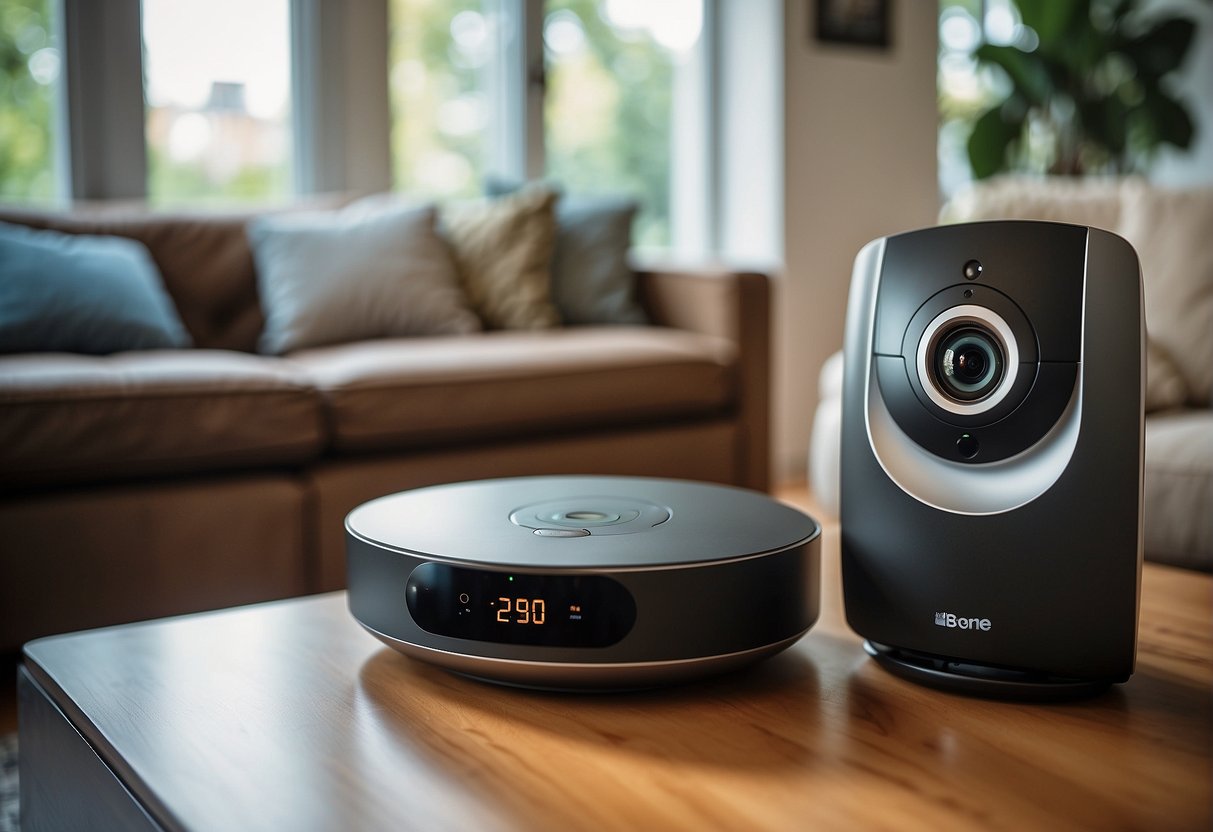
Comparing Top Market Offerings
When it comes to popular brands in the smart home security systems industry, a few names stand out such as Ring, Vivint, SimpliSafe, GE, Google Nest, Schlage, and Cove. Each of these companies offer their unique features and benefits, but it always helps to compare their offerings to find the perfect fit for your home.
The Best Smart Home Security Systems of 2024 can work seamlessly with voice commands and allow extensive remote control via smartphones – a trend that most of these brands have adopted. For instance, Ring is known for its doorbell cameras, while Vivint provides comprehensive, professionally installed home security packages.
Innovations in Home Security
As technology advances, companies are constantly embracing innovations in home security systems to offer better protection to their customers. For example, GE and Schlage are leaders in providing smart locks, which allow homeowners to remotely control the access to their homes.
SimpliSafe is another name to consider, with their popular DIY home security packages, which offer a more budget-friendly option for those who prefer to install the system themselves. On the other hand, Google Nest combines security cameras, smart thermostats, and smoke detectors for a complete smart home experience.
Overall, brands like Vivint, SimpliSafe, and others have earned their places among the best smart home security systems of 2024, bringing innovative, user-friendly, and reliable solutions to help protect your family and property.
DIY vs. Professional Security Systems
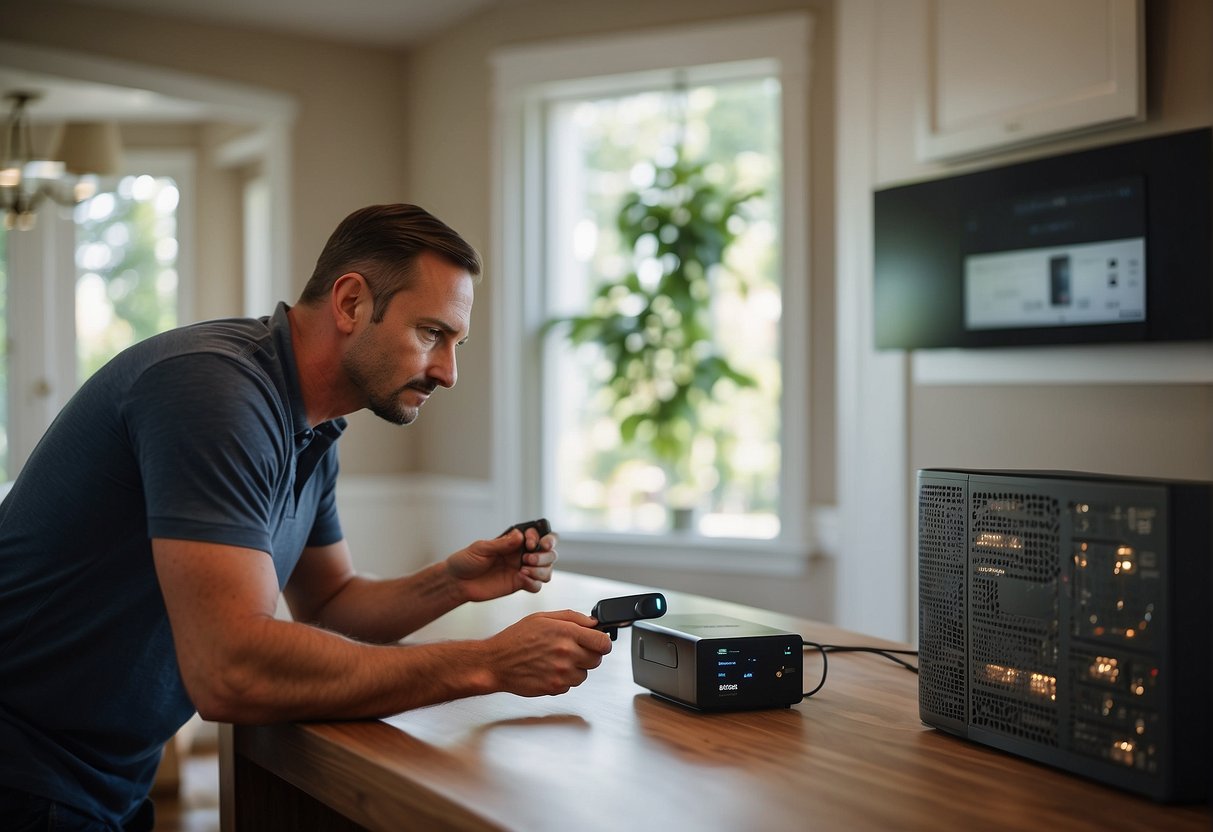
Setting up a DIY Security System
When it comes to DIY home security systems, the setup process is typically straightforward and user-friendly. Most systems come with easy-to-follow instructions, and there are plenty of resources available online for those who need further guidance. DIY-enthusiasts can delight in the customization options available, allowing them to tailor their security system to their specific needs.
On the other hand, professional monitoring services usually take care of the installation process for you. This means you can sit back and leave the technical side of things to experts, ensuring your system is set up correctly and efficiently.
Benefits of Professional Monitoring
- 24/7 coverage: With professional monitoring, trained experts are available around the clock to respond to any security alerts. This offers peace of mind that may not be possible with self-monitoring, where it’s up to the homeowner to monitor and react to any alerts.
- Technical support: When you opt for a professional security system, you also have access to tech support if any issues arise. For DIY systems, technical support may not be as easily accessible, which can be frustrating when troubleshooting.
- Insurance benefits: Some insurance companies offer discounts to homeowners who have professionally monitored security systems. This can offset the cost of the service, making it a sound investment in the long run.
While DIY security systems give users the freedom to self-monitor and customize their setup, professional monitoring offers advantages such as 24/7 coverage, technical support, and potential insurance benefits. Consider your specific needs, budget, and preferences when choosing between the two options for your smart home security system.
Pricing and Subscription Plans
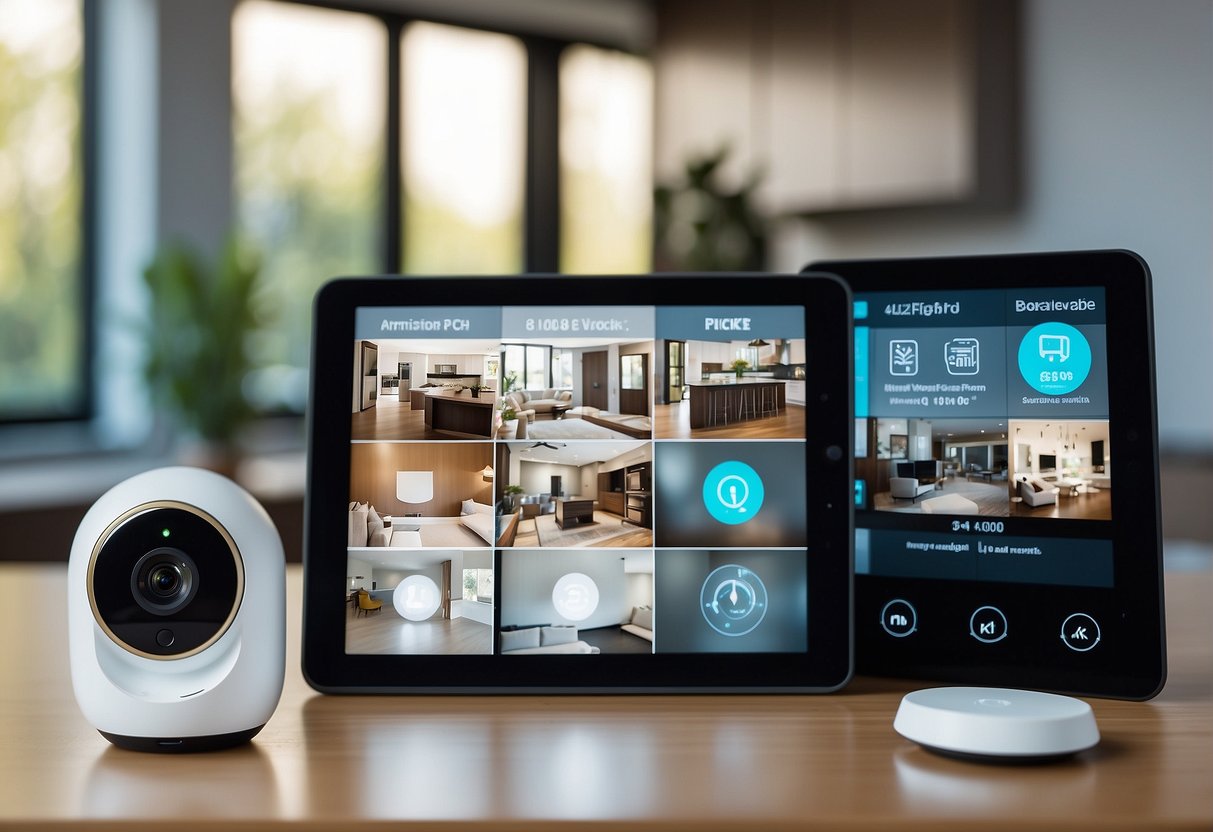
Understanding Costs and Fees
When considering a smart home security system, it’s important to understand the various costs and fees associated with it. The initial system cost can range from an affordable and simple single-camera setup to a more comprehensive and expensive multi-camera system. However, this is just the beginning as there are often additional costs to consider.
Most security systems offer optional monthly subscription fees that provide access to premium features such as cloud storage, professional monitoring, and remote access. These fees can vary greatly, with more reliable providers generally charging higher fees. It’s essential to weigh the benefits of these added features against their costs to get the most value for your money.
Evaluating Value for Money
When evaluating the value for money of a specific smart home security system, consider both the initial costs and the potential ongoing fees. Here’s a simple breakdown to assist you:
- Affordable options: These are generally low-cost systems with fewer features, appealing to those on a tight budget. However, they may require a subscription fee for additional services.
- Mid-range options: Providing a balance of cost and quality, these security systems typically offer more advanced features and better reliability. Keep an eye on monthly fees, though, as they can add up.
- High-end options: These come with a higher system cost but may offer premium features and robust reliability. Monthly fees can also be higher, providing access to professional monitoring services and more.
It may be helpful to create a table comparing the system cost and monthly fees across different providers to better evaluate your options. For example:
| Provider | System Cost | Monthly Fee (Basic) | Monthly Fee (Premium) |
|---|---|---|---|
| Example A | $300 | $10 | $25 |
| Example B | $500 | $15 | $30 |
Remember, with smart home security systems, the value isn’t just about the price; it’s about finding the right balance between affordability, reliability, and the features that matter most to you.
Integration with Home Automation
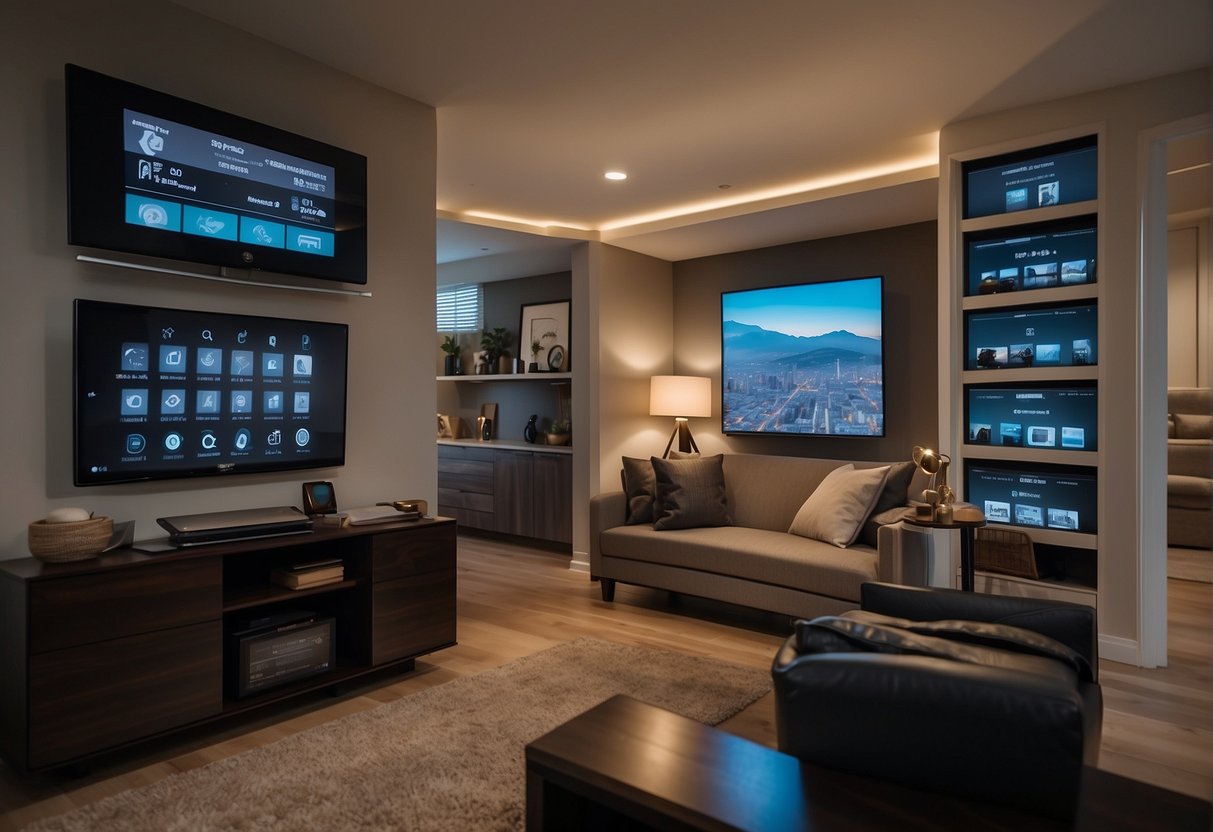
Creating a Unified Smart Home Ecosystem
When it comes to smart home security systems, seamless integration with existing home automation platforms is crucial. By effectively combining various smart devices, such as smart thermostats and smart plugs, homeowners can create a convenient and user-friendly ecosystem that enhances overall home security.
Major players in the smart home market – such as Apple HomeKit and Google Home – allow users to control multiple devices through a single app or voice command. By integrating your smart security system with these platforms, you can enjoy:
- Centralized control: Manage all your devices through a single app, making it easier to keep an eye on your entire home.
- Simplified routines: Set up automated actions in response to specific triggers, such as turning on smart lights when motion is detected.
- Voice commands: Use voice assistants like Siri or Google Assistant to arm or disarm your security system, lock doors, and more.
Compatibility with Other Smart Devices
To fully benefit from your smart home security system, it’s essential to ensure compatibility with other smart devices. Here’s a quick compatibility guide:
- Apple HomeKit: Requires devices to be specifically designed for compatibility. Be sure to check for the “Works with Apple HomeKit” label when purchasing new smart devices.
- Google Home: Most smart devices can connect to Google Home, but it’s still a good idea to confirm compatibility with the “Works with Google Assistant” label.
In addition to compatibility, consider how various devices can work together within your home. For example:
| Device | Security Function | Examples |
|---|---|---|
| Smart security cameras | Monitor and record activity | Detect intruders, monitor package deliveries |
| Smart thermostats | Control temperature while away | Turn off heating if a window is left open |
| Smart plugs | Manage power consumption and safety concerns | Turn off appliances when not in use, auto shut-off |
By carefully selecting devices that integrate with home automation platforms like Apple HomeKit and Google Home, users can create a robust and unified smart home ecosystem tailored to their unique needs and preferences.
Security and Privacy Considerations
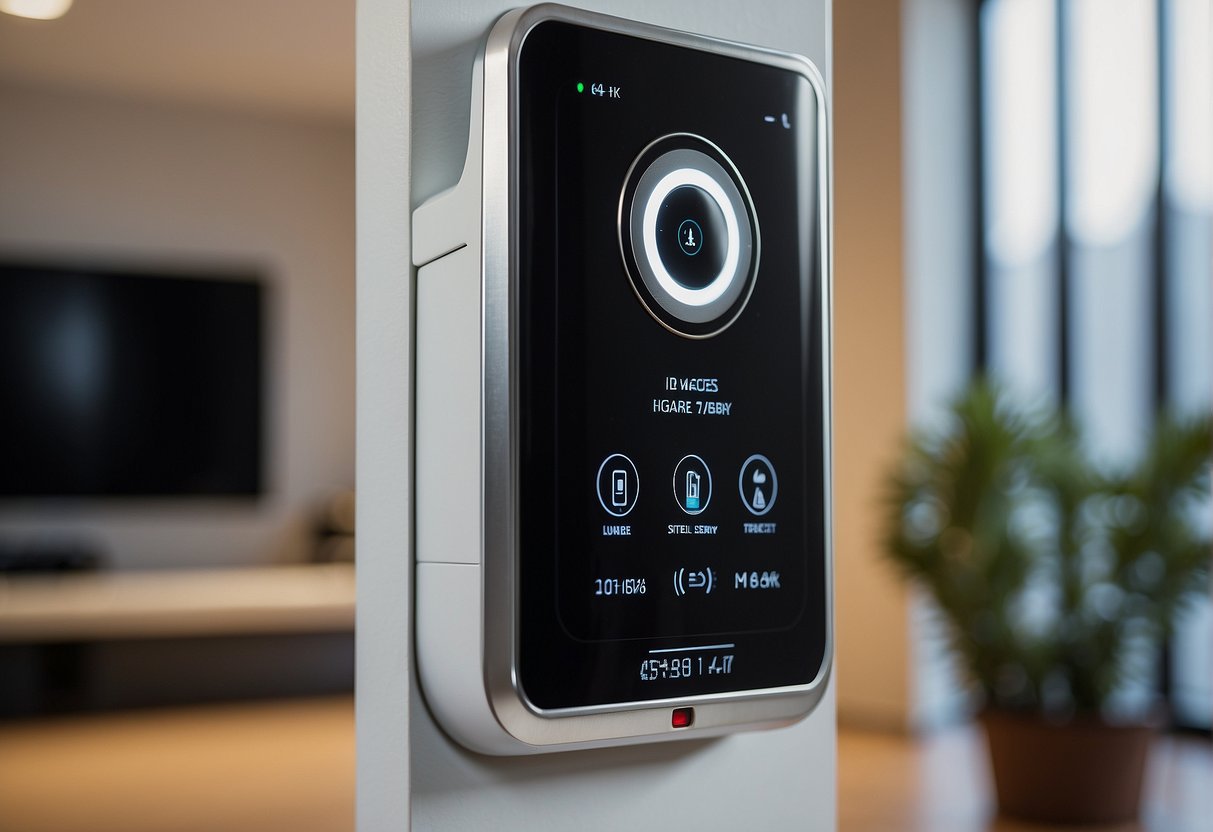
Data Security and Encryption
When talking about smart home security systems, it’s important to mention data security and encryption. After all, keeping your home safe also means keeping your information secure. Many smart home security systems use cloud storage to store your data, which can be both beneficial and risky. On one hand, it allows you to access your data from anywhere; on the other hand, it may be vulnerable to cyberattacks.
To tackle this issue, manufacturers employ various encryption techniques to protect user data. This involves scrambling your data before sending it to the cloud, making it unreadable without the decryption key. Some companies use end-to-end encryption (E2EE) to ensure that data remains secure during transmission and storage. So, even if someone gains access to the encrypted data, they’ll be unable to read it. Not all security systems offer E2EE, so it’s important to look for this feature when choosing a smart home security system.
User Privacy and Policy Transparency
Another critical aspect of smart home security systems is user privacy. Since these systems collect a large amount of data, including your home’s location, it’s vital to understand how your information is being used and whether it is shared with third parties. This is where privacy policy comes into play.
A good privacy policy should be transparent about the following:
- What data is collected
- Why data is being collected
- How long the data is stored
- How the data is being used
- Whether the data is shared with any third parties
- What measures are in place to protect user data
It’s essential to spend some time reviewing the privacy policy of a smart home security system before purchasing it. This can help ensure that your data is used responsibly and safely.
To sum up, when shopping for a smart home security system, always consider the data security and encryption methods used. Make sure the manufacturer prioritizes user data protection. Additionally, pay attention to user privacy and policy transparency to ensure the responsible handling of your sensitive information.
Troubleshooting and Customer Support

Common Issues and Fixes
Smart home security systems can sometimes experience issues that require troubleshooting. Some common problems and their respective fixes include:
-
Night vision: If night vision isn’t functioning well, clean the camera lens and remove any obstructions that might be affecting its reception of light.
-
Power outage: To protect your system from power outages, consider purchasing a backup battery to provide continued functionality. Additionally, take advantage of cellular backup options to ensure consistent monitoring.
-
Connectivity issues: If your devices aren’t communicating with each other, check the Wi-Fi signal strength and reset the device if necessary.
It is important to consult the security system’s manual and your provider’s website for more specific troubleshooting advice.
Leveraging Customer Service for Solutions
If troubleshooting challenges persist, don’t hesitate to reach out to customer service for technical support. A dedicated team of professionals should be available 24/7 to assist you with the advanced system settings and ensure your devices run smoothly for optimal performance and peace of mind.
Proactive customer service:
- Offers live chat for quick resolutions
- Provides phone support for real-time assistance
- Maintains a knowledge base or FAQ section on their website with detailed answers to common queries
Remember that leveraging customer service for solutions can be a crucial step in resolving issues with your smart home security system. Your provider should be ready to help, making sure you and your home remain safe and secure.
Luxury Specialist at McGraw Realtors
With a diverse background, including a career as an Air Force fighter pilot and entrepreneurship, Bill transitioned to real estate in 1995. Co-founding Paradigm Realty with his wife, Charlene, he quickly rose to prominence in Oklahoma City’s luxury real estate scene. Now, as one of the top agents with annual sales surpassing $20 million, Bill’s dedication to exceptional service remains unparalleled. With a legacy spanning over two decades in the industry, Bill’s expertise and commitment make him a trusted name in luxury real estate.